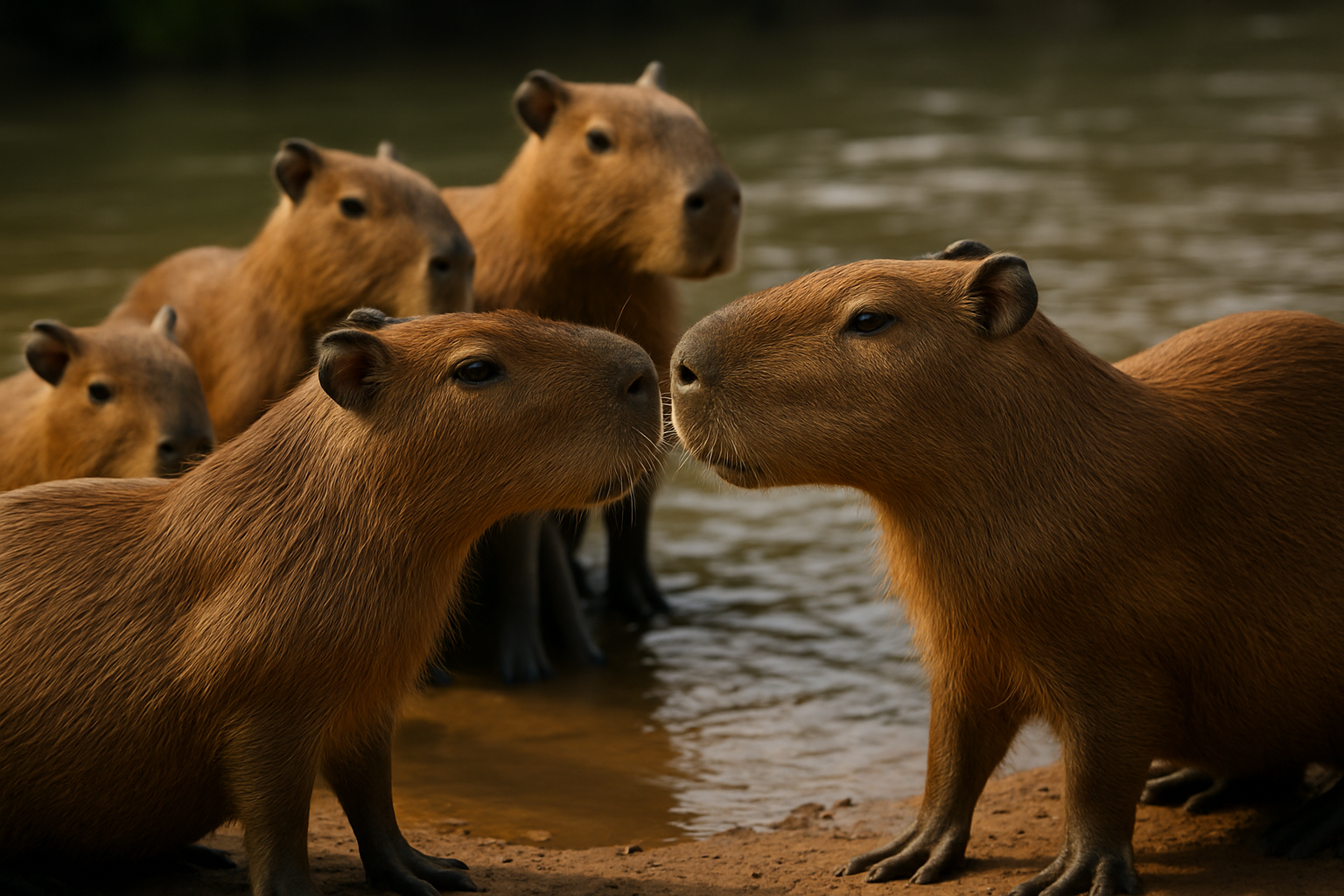Decoding the Enigmatic World of Capybara Communication
The gentle giants of the rodent world, capybaras, have long captivated animal enthusiasts with their docile nature and social behavior. Yet, beneath their calm exterior lies a complex system of communication that has only recently begun to be unraveled by researchers. This article delves into the fascinating realm of capybara communication, exploring the various methods these remarkable creatures use to interact with one another and navigate their environment.

The Vocal Repertoire of Capybaras
Capybaras possess a surprisingly rich vocal repertoire, utilizing a variety of sounds to communicate different messages. One of the most distinctive vocalizations is the “bark,” a sharp, staccato sound used to alert the herd of potential danger. This alarm call can vary in intensity depending on the perceived threat level, allowing other capybaras to respond appropriately.
Another common vocalization is the “whistle,” a high-pitched sound often used by mothers to call their young or by males during courtship displays. Capybaras also produce softer, more melodic sounds known as “purrs” or “trills” during social interactions, which are believed to express contentment or serve as a form of bonding within the group.
Body Language and Visual Cues
While vocalizations play a crucial role in capybara communication, these animals also rely heavily on body language and visual cues to convey information. One of the most notable visual displays is the “threat posture,” where a capybara will raise its head, bare its teeth, and arch its back to intimidate potential rivals or predators.
Capybaras also use subtle changes in posture and facial expressions to communicate their emotional state or intentions. For example, a relaxed capybara will often lie on its side with its legs stretched out, signaling that it feels safe and comfortable. Conversely, an alert or anxious capybara will stand upright with its ears perked forward, ready to respond to any potential threats.
Chemical Communication and Scent Marking
Like many other mammals, capybaras utilize chemical communication through scent marking to convey information about their identity, territory, and reproductive status. These rodents possess a unique scent gland called the morillo, located on top of their snouts. Males, in particular, use this gland to mark territory and attract potential mates by rubbing it against objects in their environment.
Capybaras also communicate through urine and feces, which contain pheromones that can provide valuable information to other members of the herd. These chemical signals can indicate an individual’s health, dominance status, and readiness to mate, playing a crucial role in maintaining social hierarchies and coordinating reproductive activities within the group.
Tactile Communication and Social Bonding
Physical touch plays a significant role in capybara communication, particularly in strengthening social bonds within the herd. Capybaras often engage in mutual grooming, using their teeth and claws to remove parasites and debris from each other’s fur. This behavior not only serves a practical purpose but also reinforces social connections and hierarchies within the group.
Another form of tactile communication observed in capybaras is “nuzzling,” where individuals gently rub their noses against one another. This behavior is commonly seen between mothers and offspring, as well as between bonded pairs, and is believed to be a sign of affection and reassurance.
Interspecies Communication
One of the most intriguing aspects of capybara communication is their ability to interact with other species. In their natural habitats, capybaras often form symbiotic relationships with birds, allowing them to perch on their backs and remove parasites. This mutually beneficial arrangement requires a level of communication and understanding between the two species.
Capybaras have also been observed communicating with humans, particularly in captive settings. They can learn to recognize individual caretakers and respond to basic commands, demonstrating their cognitive abilities and adaptability in interspecies interactions.
The Future of Capybara Communication Research
As interest in capybaras continues to grow, both in the wild and as exotic pets, researchers are increasingly focused on understanding the nuances of their communication systems. Recent studies have begun to explore the potential for capybaras to use infrasonic vocalizations, sounds below the range of human hearing, which could provide new insights into their long-distance communication strategies.
Additionally, advances in technology, such as high-resolution audio recording devices and sophisticated video analysis tools, are enabling scientists to capture and analyze capybara communication in unprecedented detail. These developments promise to shed new light on the complexity of capybara social structures and their ability to adapt to changing environments.
In conclusion, the world of capybara communication is far more intricate and fascinating than many people realize. From their diverse vocal repertoire to their sophisticated use of body language and chemical signals, these charismatic rodents have developed a complex system of interaction that continues to captivate researchers and animal enthusiasts alike. As our understanding of capybara communication grows, it not only enhances our appreciation for these remarkable creatures but also provides valuable insights into the broader field of animal behavior and cognition.





